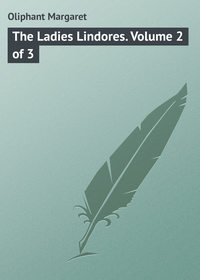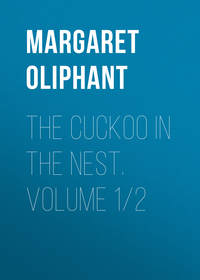 полная версия
полная версияThe Makers of Modern Rome, in Four Books
But the literary aspect of Pope Nicolas's character, however delightful, is not that with which we are chiefly concerned. He was the first Pope to conceive a systematic plan for the reconstruction and permanent restoration of Rome, a plan which it is needless to say his life was not long enough to carry out, but which yet formed the basis of all after-plans, and was eventually more or less accomplished by different hands.
It was to the centre of ecclesiastical Rome, the shrine of the Apostles, the chief church of Christendom and its adjacent buildings that the care of the Builder-Pope was first directed. The Leonine city, or Borgo as it is more familiarly called, is that portion of Rome which lies on the left side of the Tiber, and which extends from the castle of St. Angelo to the boundary of the Vatican gardens – enclosing the church of St. Peter, the Vatican Palace with all its wealth, and the great Hospital of Santo Spirito, surrounded and intersected by many little streets, and joined to the other portions of the city by the bridge of St. Angelo. Behind the mass of picture galleries, museums, and collections of all kinds, which now fill up the endless halls and corridors of the Papal palace, comes a sweep of noble gardens full of shade and shelter from the Roman sun, such a resort for the
"learnèd leisureWhich in trim gardens takes its pleasure"as it would be difficult to surpass. In this fine extent of wood and verdure the Pope's villa or casino, now the only summer palace which the existing Pontiff chooses to permit himself, stands as in a domain, small yet perfect. Almost everything within these walls has been built or completely transformed since the days of Nicolas. But then as now, here was the heart and centre of Christendom, the supreme shrine of the Catholic faith, the home of the spiritual ruler whose sway reached over the whole earth. When Nicolas began his reign, the old church of St. Peter was the church of the Western world, then as now, classical in form, a stately basilica without the picturesqueness and romantic variety, and also, as we think, without the majesty and grandeur of a Gothic cathedral, yet more picturesque if less stupendous in size and construction than the present great edifice, so majestic in its own grave and splendid way, with which through all the agitations of the recent centuries, the name of St. Peter's has been identified. The earlier church was full of riches, and of great associations, to which the wonderful St. Peter's we all know can lay claim only as its successor and supplanter. With its flight of broad steps, its portico and colonnaded façade crowned with a great tower, it dominated the square, open and glowing in the sun without the shelter of the great existing colonnades or the sparkle of the fountains. Behind was the little palace begun by Innocent III. to afford a shelter for the Popes in dangerous times, or on occasion to receive the foreign guests whose object was to visit the Shrine of the Apostles. Almost all the buildings then standing have been replaced by greater, yet the position is the same, the shrine unchanged, though everything else then existing has faded away, except some portion of the old wall which enclosed this sacred place in a special sanctity and security, which was not, however, always respected. The Borgo was the holiest portion of all the sacred city. It was there that the blood of the martyrs had been shed, and where from the earliest age of Christianity their memory and tradition had been preserved. It is not necessary for us to enter into the question whether St. Peter ever was in Rome, which many writers have laboriously contested. So far as the record of the Acts of the Apostles is concerned, there is no evidence at all for or against, but tradition is all on the side of those who assert it. The position taken by Signor Lanciani on this point seems to us a very sensible one. "I write about the monuments of ancient Rome," he says, "from a strictly archæological point of view, avoiding questions which pertain, or are supposed to pertain, to religious controversy."
"For the archæologist the presence and execution of SS. Peter and Paul in Rome are facts established beyond a shadow of doubt by purely monumental evidence. There was a time when persons belonging to different creeds made it almost a case of conscience to affirm or deny a priori those facts, according to their acceptance or rejection of the tradition of any particular Church. This state of feeling is a matter of the past at least for those who have followed the progress of recent discoveries and of critical literature. There is no event of the Imperial age and of Imperial Rome which is attested by so many noble structures, all of which point to the same conclusion – the presence and execution of the Apostles in the capital of the empire. When Constantine raised the monumental basilicas over their tombs on the Via Cornelia and the Via Ostiensis: when Eudoxia built the Church ad Vincula: when Damasus put a memorial tablet in the Platonia ad Catacombos: when the houses of Pudens and Aquila and Prisca were turned into oratories: when the name of Nymphæ Sancti Petri was given to the springs in the catacombs of the Via Nomentana: when the 29th June was accepted as the anniversary of St. Peter's execution: when sculptors, painters, medallists, goldsmiths, workers in glass and enamel, and engravers of precious stones, all began to reproduce in Rome the likeness of the apostle at the beginning of the second century, and continued to do so till the fall of the Empire: must we consider them as labouring under a delusion, or conspiring in the commission of a gigantic fraud? Why were such proceedings accepted without protest from whatever city, whatever community – if there were any other – which claimed to own the genuine tombs of SS. Peter and Paul? These arguments gain more value from the fact that the evidence on the other side is purely negative."
This is one of those practical arguments which are always more interesting than those which depend upon theories and opinions. However, there are many books on both sides of the question which may be consulted. We are content to follow Signor Lanciani. The special sanctity and importance of Il Borgo originated in this belief. The shrine of the Apostle was its centre and its glory. It was this that brought pilgrims from the far corners of the earth before there was any masterpiece of art to visit, or any of those priceless collections which now form the glory of the Vatican. The spot of the Apostle's execution was indicated "by immemorial tradition" as between the two goals (inter duas metas) of Nero's circus, which spot Signor Lanciani tells us is exactly the site of the obelisk now standing in the piazza of St. Peter. A little chapel, called the Chapel of the Crucifixion, stood there in the early ages, before any great basilica or splendid shrine was possible.
This sacred spot, and the church built to commemorate it, were naturally the centre of all those religious traditions which separate Rome from every other city. It was to preserve them from assault, "in order that it should be less easy for the enemy to make depredations and burn the church of St. Peter, as they have heretofore done," that Leo IV., the first Pope, whom we find engaged in any real work of construction built a wall round the mount of the Vatican, the "Colle Vaticano" – little hill, not so high as the seven hills of Rome – where against the strong wall of Nero's circus Constantine had built his great basilica. At that period – in the middle of the ninth century – there was nothing but the church and shrine – no palace and no hospital. The existing houses were given to the Corsi, a family which had been driven out of their island, according to Platina, by the Saracens, who shortly before had made an incursion up to the very walls of Rome, whither the peoples of the coast (luoghi maritimi del Mar Terreno) from Naples northward had apparently pursued the Corsairs, and helped the Romans to beat them back. One other humble building of some sort, "called Burgus Saxonum, Vicus Saxonum, Schola Saxonum, and simply Saxia or Sassia," it is interesting to know, existed close to the sacred centre of the place, a lodging built for himself by Ina, King of Wessex, in 727. Thus we have a national association of our own with the central shrine of Christianity. "There was also a Schola Francorum in the Borgo." The pilgrims must have built their huts and set up some sort of little oratory – favoured, as was the case even in Pope Nicolas's day, by the excellent quarry of the circus close at hand – as near as possible to the great shrine and basilica which they had come so far to say their prayers in; and attracted too, no doubt, by the freedom of the lonely suburb between the green hill and the flowing river. Leo IV. built his wall round this little city, and fortified it by towers. "In every part he put sculptures of marble and wrote a prayer," says Platina. One of these gates led to St. Pellegrino, another was close to the castle of St. Angelo, and was "the gate by which one goes forth to the open country." The third led to the School of the Saxons; and over each was a prayer inscribed. These three prayers were all to the same effect – "that God would defend this new city which the Pope had enclosed with walls and called by his own name, the Leonine City, from all assaults of the enemy, either by fraud or by force."
This was then from the beginning the citadel and innermost sanctuary of Rome. It was not till much later, under the reign of Innocent III., that the idea of building a house for the Pope within that enclosure originated. The same great Pope founded the vast hospital of the Santo Spirito – on the site of a previous hospice for the poor either within or close to its walls. Thus it came to be the lodging of the Sovereign Pontiff, and of the scarcely less sacred sick and suffering, as well as the most holy and chiefest of all Christian sanctuaries. Were we to be very minute, it might be easily proved that almost every Pope contributed something to the existence and decoration of the Leonine city, the imperium in imperio; and specially, as was natural, to the great basilica.
The little Palazzo di San Pietro being close to St. Angelo, the stronghold and most safe resort in danger, was occupied by the court on its return from Avignon, and probably then became the official home of the Popes; though for some time there seems to have been a considerable latitude in that respect. Pope Martin afterwards removed to the Palace of the Apostles. Another of the Popes preferred to all others the great Palazzo Venezia, which he had built: but the name of the Vatican was henceforth received as the title of the Papal court. The enlargement and embellishment of this palace thus became naturally the great object of the Popes, and nothing was spared upon it. It is put first in every record of achievement even when there is other important work to describe. "Nicolas," says Platina, "builded magnificently both in the Vatican, and in the city. He rebuilt the churches of St. Stefano Rotondo and of St. Teodoro," the former most interesting church being built upon the foundations of a round building of classical times, supposed, Mr. Hare tells us, to have belonged to the ancient Fleshmarket, as we should say, the Macellum Magnum. S. Teodoro is also a rotondo. It would seem that there were different opinions as to the success of these restorations in the fifteenth century such as arise among ourselves in respect to almost every work of the same kind. A certain "celebrated architect," Francesco di Giorgio di Martino, of Sienna, was then about the world, a man who spoke his mind. "Hedifitio ruinato," he says of St. Stefano, with equal disregard to spelling and to manners. "Rebuilt," he adds, "by Pope Nichola; but much more spoilt: " which is such a thing as we now hear said of the once much-vaunted restorations of Sir Gilbert Scott. Our Pope also "made a leaden roof for Sta. Maria Rotonda in the middle of the city, built by M. Agrippa as a temple for all the gods and called the Pantheon." He must have been fond of this unusual form; but whether it was a mere whim of personal liking, or if there was any meaning in his construction of these round temples, we have no information. Perhaps Nicolas had a special admiration of the solemn and beautiful Pantheon, in which we completely sympathise. The question is too insignificant to be inquired into. Yet it is curious in its way.
These were however, though specially distinguished by Platina, but a drop in the ocean to the numberless undertakings of Pope Nicolas throughout the city; and all these again were inferior in importance to the great works in St. Peter's and the Vatican, to which his predecessors had each put a hand so long as their time lasted. "In the Vatican," says Platina, "he built those apartments of the Pontiff, which are to be seen to this day: and he began the wall of the Vatican, great and high, with its incredible depth of foundation, and high towers, to hold the enemy at a distance, so that neither the church of St. Peter (as had already happened several times) nor the palace of the Pope should ever be sacked. He began also the tribune of the church of St. Peter, that the church might hold more people, and might be more magnificent. He also rebuilt the Ponte Molle, and erected near the baths of Viterbo a great palace. Having the aid of much money, he built many parts of the city, and cleansed all the streets." Great also in other ways were his gifts to his beloved church and city – "vases of gold and silver, crosses ornamented with gems, rich vestments and precious tapestry, woven with gold and silver, and the mitre of the Pontificate, which demonstrated his liberality." It was he who first placed a second crown on the mitre, which up to this time had borne one circlet alone. The complete tiara with the three crowns was adopted in a later reign.
The two previous Popes, his predecessors, had been magnificent also in their acquisitions for the Church in this kind; both of them being curious in goldsmiths' work, then entering upon its most splendid development, and in their collections of precious stones. The valuable work of M. Muntz, Les Arts à la cour des papes, abounds in details of these splendid jewels. Indeed his sober records of daily work and its payment seem to transport us out of one busy scene into another as by the touch of a magician's wand, as if Rome the turbulent and idle, full of aimless popular rushes to and fro, had suddenly become a beehive full of energetic workers and the noise of cheerful labour, both out of doors in the sun, where the masons were loudly at work, and in many a workshop, where the most delicate and ingenious arts were being carried on. Roman artists at length began to appear amid the host of Florentines and the whole world seems to have turned into one great bottega full of everything rich and rare.
The greatest, however, of all the conceptions of Pope Nicolas, the very centre of his great plan, was the library of the Vatican, which he began to build and to which he left all the collections of his life. Vespasian gives us a list of the principal among those 5,000 volumes, the things which he prized most, which the Pope bequeathed to the Church and to Rome. These cherished rolls of parchment, many of them translations made under his own eyes, were enclosed in elaborate bindings ornamented with gold and silver. We are not, however, informed whether any of the great treasures of the Vatican library came from his hands – the good Vespasian taking more interest in the work of his scribes than in Codexes. He tells us of 500 scudi given to Lorenzo Valle with a pretty speech that the price was below his merits, but that eventually he should have more liberal pay; of 1,500 scudi given to Guerroni for a translation of the Iliad, and so forth. It is like a bookseller of the present day vaunting his new editions to a collector in search of the earliest known. But Pope Nicolas, like most other patrons of his time, knew no Greek, nor probably ever expected that it would become a usual subject of study, so that his translations were precious to him, the chief way of making his treasures of any practical use.
The greater part, alas! of all this splendour has passed away. One pure and perfect glory, the little chapel of San Lorenzo, painted by the tender hand of Fra Angelico, remains unharmed, the only work of that grand painter to be found in Rome. If one could have chosen a monument for the good Pope, the patron and friend of art in every form, there could not have been a better than this. Fra Angelico seems to have been brought to Rome by Pope Eugenius, but it was under Nicolas, in two or three years of gentle labour, that the work was done. It is, however, impossible to enumerate all the undertakings of Pope Nicolas. He did something to re-establish or decorate almost all of the great basilicas. It is feared – but here our later historians speak with bated breath, not liking to bring such an accusation against the kind Pope, who loved men of letters – that the destruction of St. Peter's, afterwards ruthlessly carried out by succeeding Popes was in his plan: on the pretext, so constantly employed, and possibly believed in, of the instability of the ancient building. But there is no absolute certainty of evidence, and at all events he might have repented, for he certainly did not do that deed. He began the tribune, however, in the ancient church, which may have been a preparation for the entire renewal of the edifice; and he did much towards the decoration of another round church, that of the Madonna delle Febbre, an ill-omened name, attached to the Vatican. He also built the Belvedere in the gardens, and surrounded the whole with strong walls and towers (round), one of which according to Nibby still remained fifty years ago; which very little of Nicolas's building has done. His great sin was one which he shared with all his brother-Popes, that he boldly treated the antique ruins of the city as quarries for his new buildings, not without protest and remonstrance from many, yet with the calm of a mind preoccupied and seeing nothing so great and important as the work upon which his own heart was set.
This excellent Pope died in 1455, soon after having received the news of the downfall of Constantinople, which is said to have broken his heart. He had many ailments, and was always a small and spare man of little strength of constitution; but "nothing transfixed his heart so much as to hear that the Turk had taken Constantinople and killed the Europeans, with many thousands of Christians," among them that same "Imperadore de Gostantinopli" whom he had seen seated in state at the Council of Ferrara, listening to his own and other arguments, only a few years before – as well as the greater part, no doubt, of his own clerical opponents there. When he was dying "being not the less of a strong spirit," he called the Cardinals round his bed, and many prelates with them, and made them a last address. His pontificate had lasted a little more than eight years, and to have carried out so little of his great plan must have been heavy on his heart; but his dying words are those of one to whom the holiness and unity of the Church came before all. No doubt the fear that the victorious Turks might spread ruin over the whole of Christendom was first in his mind at that solemn hour.
"'Knowing, my dearest brethren, that I am approaching the hour of my death, I would, for the greater dignity and authority of the Apostolic See, make a serious and important testament before you, not committed to the memory of letters, not written, neither on a tablet nor on parchment, but given by my living voice that it may have more authority. Listen, I pray you, while your little Pope Nicolas (papa Niccolajo) in the very instant of dying makes his last will before you. In the first place I render thanks to the Highest God for the measureless benefits which, beginning from the day of my birth until the present day, I have received of His infinite mercy. And now I recommend to you this beautiful spouse of Christ, whom, so far as I was able, I have exalted and magnified, as each of you is well aware; knowing this to be to the honour of God, for the great dignity that is in her, and the great privileges that she possesses, and so worthy, and formed by so worthy an Author, who is the Creator of the Universe. Being of sane mind and intellect, and having done that which every Christian is called to do, and specially the Pastor of the Church, I have received the most sacred body of Christ with penitence, taking from His table with my two hands, and praying the Omnipotent God that he would pardon my sins. Having had these sacraments I have also received the extreme unction which is the last sacrament for the redeeming of my soul. Again I recommend to you, as long as I am able, the Roman Church, notwithstanding that I have already done so; for this is the most important duty you have to fulfil in the sight of God and men. This is that true Spouse of Christ which He bought with his blood. This is that robe without seam, which the impious Jews would have torn but could not. This is that ship of St. Peter, Prince of the Apostles, agitated and tossed by varied fortunes of the winds, but sustained by the Omnipotent God, so that she can never be submerged or shipwrecked. With all the strength of your souls sustain her and rule her: she has need of your good works, and you should show a good example by your lives. If you with all your strength care for her and love her, God will reward you, both in this present life and in the future with life eternal; and to do this with all the strength we have, we pray you: do it diligently, dearest brethren.'
"Having said this he raised his hands to heaven and said, 'Omnipotent God, grant to the Holy Church, and to these fathers, a pastor who will preserve her and increase her; give to them a good pastor who will rule and govern thy flock the most maturely that one can rule and govern. And I pray for you and comfort you as much as I know and can. Pray for me to God in your prayers.' When he had ended these words, he raised his right arm and, with a generous soul, gave the benediction – Benedicat vos Deus, Pater et Filius et Spiritus Sanctus – speaking with a raised voice and solemnly, in modo Pontificale."
These tremulous words, broken and confused by the weakness of his last hours, were taken down by the favourite scribe, Giannozzo Manetti, in the chamber of the dying Pope: with much more of the most serious matter to the Church and to Rome. His eager desire to soften all possible controversies and produce in the minds of the conclave about his bed, so full of ambition and the force of life, the softened heart which would dispose them to a peaceful and conscientious election of his successor, is very touching, coming out of the fogs and mists of approaching death.
In the very age that produced the Borgias, and himself the head of that band of elegant scholars and connoisseurs, everything but Christian, to whom Rome owes so much of her external beauty and splendour, it is pathetic to stand by this kind and gentle spirit as he pauses on the threshold of a higher life, subduing the astute and worldly minded Churchmen round him with the tender appeal of the dying father, their Papa Niccolajo, familiar and persuasive – beseeching them to be of one accord without so much as saying it, turning his own weakness to account to touch their hearts, for the honour of the Church and the welfare of the flock.
CHAPTER II.
CALIXTUS III. – PIUS II. – PAUL II. – SIXTUS IV
It is not unusual even in the strictest of hereditary monarchies to find the policy of one ruler entirely contradicted and upset by his successor; and it is still more natural that such a thing should happen in a succession of men, unlike and unconnected with each other as were the Popes; but the difference was more than usually great between Nicolas and Calixtus III., the next occupant of the Holy See, elected 1455, died 1458, who was an old man and a Spaniard, and loved neither books nor pictures, nor any of the new arts which had bewitched (as many people believed) Pope Nicolas and seduced him into squandering the treasure of the Papacy upon unnecessary buildings, and still more unnecessary decorations. Calixtus was a Borgia, the first to introduce the horror of that name: but he was not in himself a harmful personage. "He spent little in building," says Platina, "for he lived but a short time, and saved all his money for the undertaking against the Turks," an enterprise which had become a very real and necessary one, now that Constantinople had fallen; but which had no longer the romance and sentiment of the Crusades to inspire it, though successive Pontiffs did their best to rouse Christendom on the subject. The aged Spanish Cardinal threw himself into it with all the fervour of his nature, which better than many others knew the mettle of the Moor. His short term of power was entirely occupied with this. A little building went on, which could not be helped: the walls had always to be looked to; but Pope Nicolas's army of scribes were all turned off summarily; the studios were closed, the artist people turned away about their business; all the great works put a stop to. Worse even than that – for Calixtus was a short-lived interruption, and perhaps might only have stopped the progress of events for some three years or so – Pope Nicolas's great plan, which was so complete, went out of sight, and was lost in the limbo of good intentions. His workmen were dispersed, and the fashion to which he had accustomed the world, changed. It was only resumed with earnestness after several generations, and never quite in the great lines which he had laid out. Neither did the new Pope get his Crusade, which might have been a better thing. Yet Calixtus was a person assai generoso, Platina tells us; in any case he occupied his great post for a very short time.











